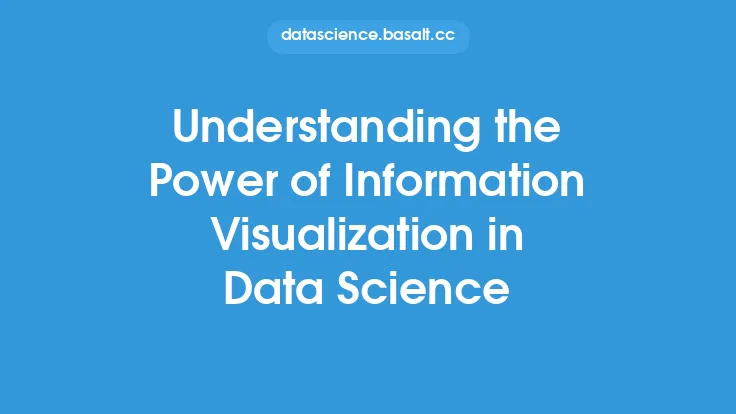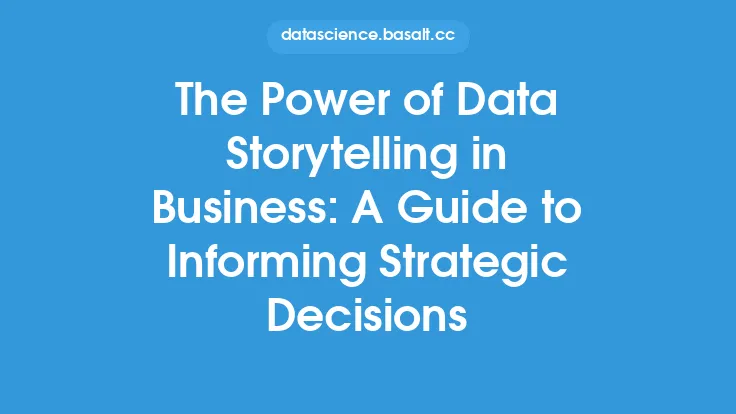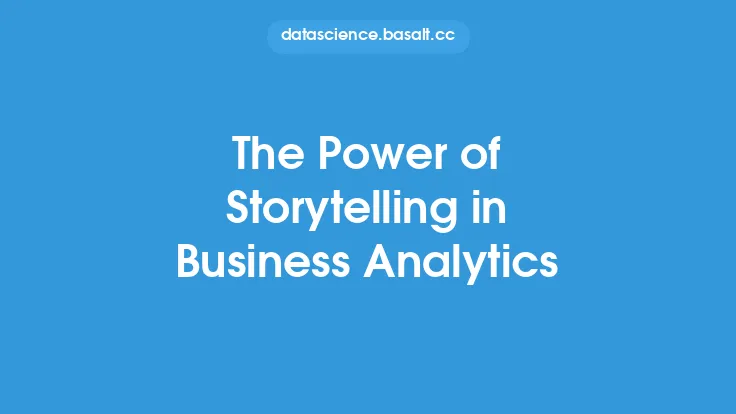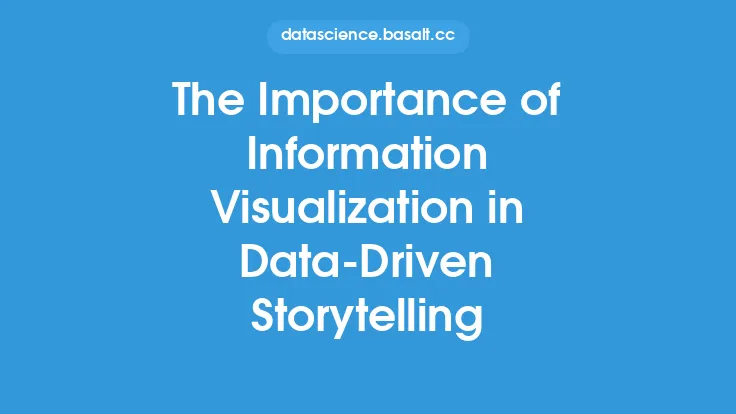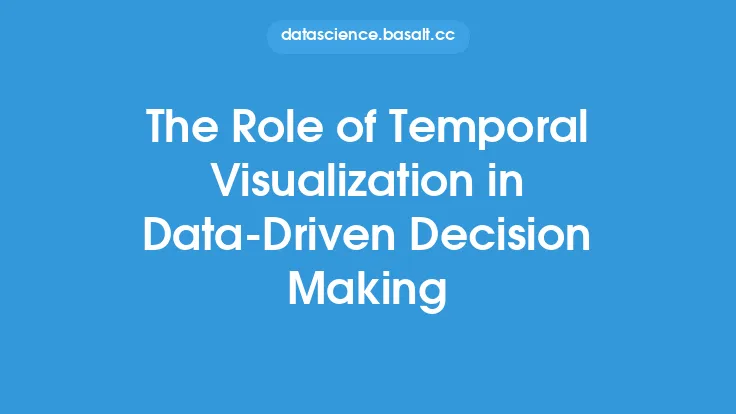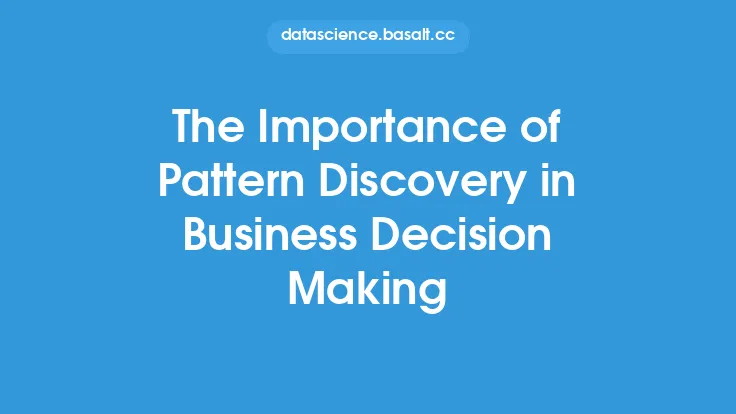In today's fast-paced business landscape, identifying trends is crucial for companies to stay ahead of the competition. One powerful tool that has emerged as a game-changer in this regard is visualization. By leveraging visualization techniques, businesses can uncover hidden patterns, spot emerging trends, and make informed decisions to drive growth and success. In this article, we will delve into the world of visualization and explore its role in identifying business trends.
Introduction to Visualization
Visualization is the process of using graphical representations to communicate information and data insights. It involves using various visual elements such as charts, graphs, maps, and other graphical representations to display complex data in a clear and concise manner. Visualization has become an essential tool in business intelligence, enabling organizations to extract insights from large datasets and make data-driven decisions. By using visualization, businesses can identify trends, patterns, and correlations that may not be apparent through traditional data analysis methods.
Types of Visualization
There are several types of visualization techniques that can be used to identify business trends. Some of the most common types include:
- Time-series visualization: This type of visualization is used to display data that varies over time. It is commonly used to identify trends, patterns, and seasonality in data.
- Scatter plot visualization: This type of visualization is used to display the relationship between two variables. It is commonly used to identify correlations and patterns in data.
- Heatmap visualization: This type of visualization is used to display the relationship between two variables using a color-coded matrix. It is commonly used to identify patterns and trends in data.
- Geospatial visualization: This type of visualization is used to display data that is related to geographic locations. It is commonly used to identify trends and patterns in data that are specific to certain regions or locations.
Benefits of Visualization in Identifying Business Trends
The use of visualization in identifying business trends offers several benefits. Some of the most significant advantages include:
- Improved insight: Visualization enables businesses to extract insights from large datasets and identify trends and patterns that may not be apparent through traditional data analysis methods.
- Enhanced decision-making: By using visualization, businesses can make informed decisions based on data-driven insights, rather than relying on intuition or guesswork.
- Increased efficiency: Visualization can help businesses to identify trends and patterns quickly and efficiently, reducing the time and effort required to analyze large datasets.
- Better communication: Visualization can help businesses to communicate complex data insights to stakeholders in a clear and concise manner, facilitating better collaboration and decision-making.
Technical Aspects of Visualization
From a technical perspective, visualization involves the use of various tools and technologies to create graphical representations of data. Some of the most common tools used for visualization include:
- Data visualization software: This type of software is specifically designed for creating visualizations and includes tools such as Tableau, Power BI, and D3.js.
- Programming languages: Programming languages such as Python, R, and JavaScript are commonly used for creating custom visualizations.
- Data manipulation libraries: Data manipulation libraries such as Pandas and NumPy are used to manipulate and analyze data before creating visualizations.
- Graphical libraries: Graphical libraries such as Matplotlib and Seaborn are used to create graphical representations of data.
Best Practices for Visualization
To get the most out of visualization, businesses should follow best practices such as:
- Keeping it simple: Visualizations should be simple and easy to understand, avoiding clutter and unnecessary complexity.
- Using color effectively: Color should be used effectively to highlight trends and patterns in data, rather than simply for aesthetic purposes.
- Providing context: Visualizations should provide context to help stakeholders understand the insights and trends being presented.
- Interactivity: Visualizations should be interactive, allowing stakeholders to explore and analyze data in more detail.
Real-World Applications of Visualization
Visualization has a wide range of real-world applications in business, including:
- Market research: Visualization can be used to analyze customer behavior and identify trends in market research data.
- Financial analysis: Visualization can be used to analyze financial data and identify trends and patterns in revenue, expenses, and profitability.
- Operational optimization: Visualization can be used to analyze operational data and identify trends and patterns in supply chain management, logistics, and other business operations.
- Customer segmentation: Visualization can be used to analyze customer data and identify trends and patterns in customer behavior and preferences.
Future of Visualization
The future of visualization is exciting and rapidly evolving. Some of the emerging trends in visualization include:
- Artificial intelligence: Artificial intelligence is being used to create more sophisticated and interactive visualizations, enabling businesses to extract deeper insights from data.
- Virtual and augmented reality: Virtual and augmented reality are being used to create immersive and interactive visualizations, enabling businesses to explore and analyze data in new and innovative ways.
- Big data: The increasing availability of big data is driving the development of new visualization tools and techniques, enabling businesses to extract insights from large and complex datasets.
- Cloud-based visualization: Cloud-based visualization is becoming increasingly popular, enabling businesses to access and share visualizations from anywhere, at any time.
